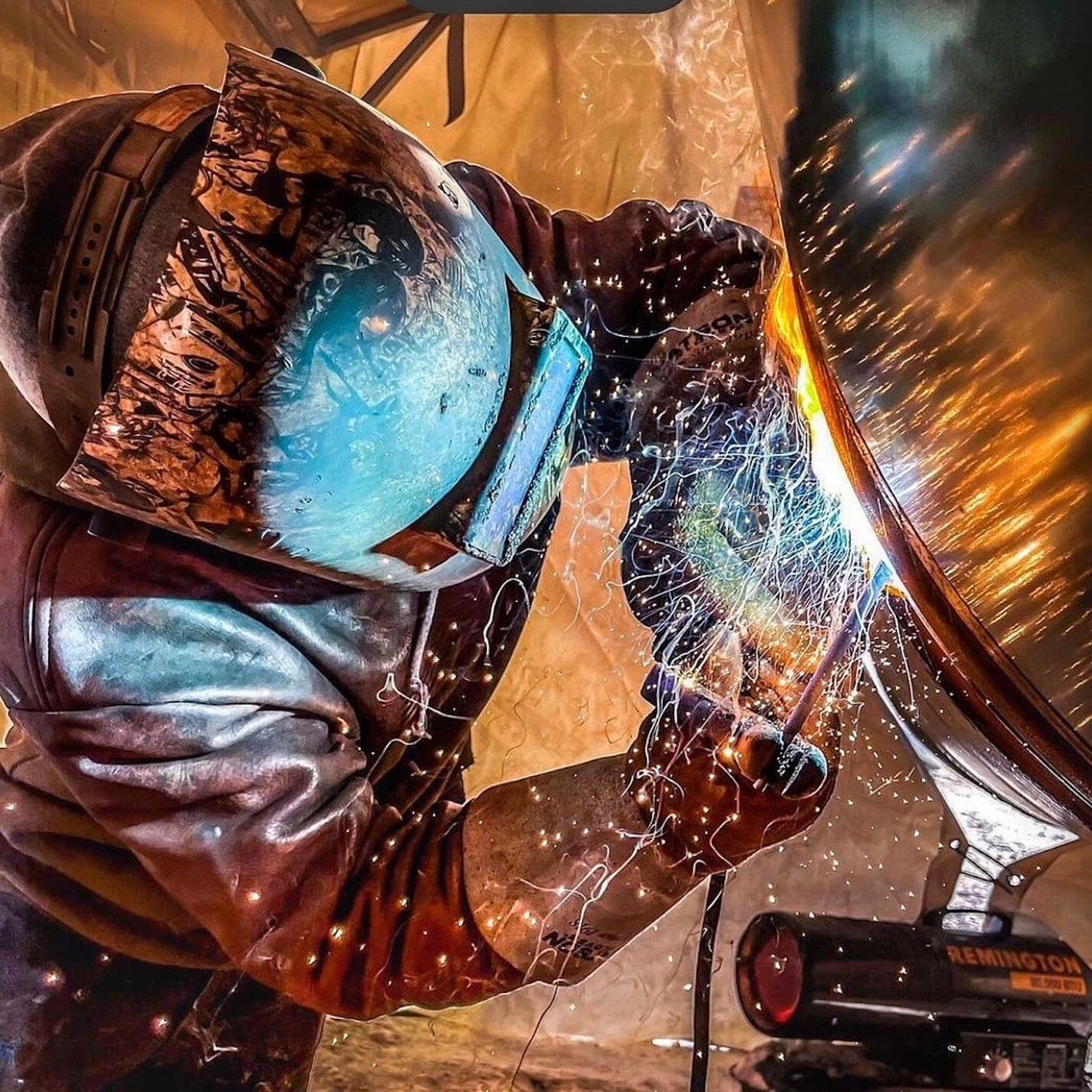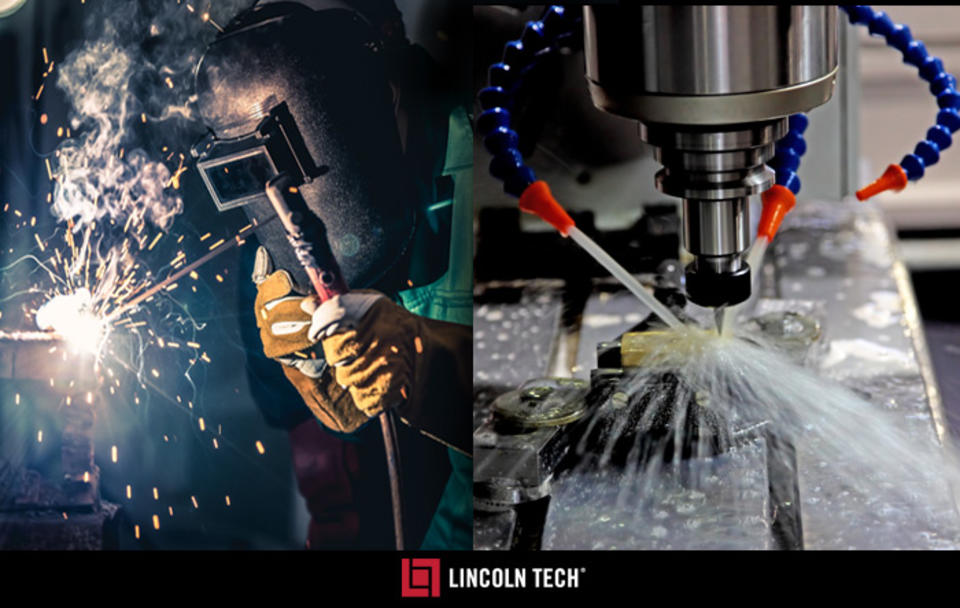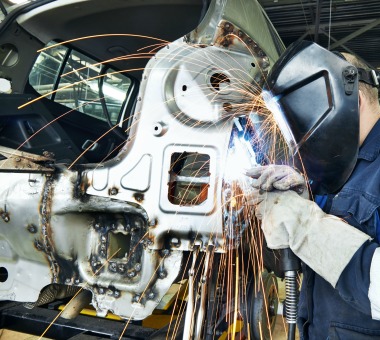Common Welding Fixing Issues and Just How to Address Them Effectively
Welding repairs often run into a series of problems that can threaten the honesty of the final product. Common troubles consist of insufficient infiltration, porosity, and misalignment, to name a few. Each issue presents distinct challenges that require certain approaches for resolution. Understanding these concerns is crucial for welders aiming to enhance their skills and end results. This conversation will certainly discover these typical welding repair concerns and effective methods to address them.
Poor Penetration
Insufficient penetration takes place when the weld steel falls short to totally fuse with the base product, leading to weak joints and prospective architectural failures. This concern often originates from insufficient warm input, incorrect electrode angle, or improper welding speed. Welders may experience poor infiltration due to a miscalculation of the required criteria for a particular material density or kind. In addition, contamination on the base material's surface area can prevent effective bonding, worsening the problem. To address poor infiltration, welders ought to ensure appropriate settings on their tools and keep a tidy job surface area. Normal assessment of welds is advised to identify any kind of deficiencies early, enabling timely modifications and the prevention of compromised structural stability in welded settings up.
Porosity
Porosity is an usual issue in welded joints that manifests as tiny gas bubbles caught within the weld metal. This defect can endanger the integrity of the weld, leading to minimized toughness and potential failing under stress. Montana Mobile Welding and Repair Belgrade Fabrication. Porosity normally arises from contamination, dampness, or improper welding techniques, which enable gases to leave right into the liquified weld swimming pool. To resolve porosity, welders need to assure proper surface area preparation, preserve a tidy working atmosphere, and utilize ideal welding specifications. Additionally, picking the right filler material and securing gas can reduce gas entrapment. Routine inspection and testing of welds can assist recognize porosity early, assuring prompt restorative activities are taken, consequently maintaining the top quality and dependability of the welded structure
Misalignment
Imbalance in welding can emerge from different aspects, including improper arrangement and thermal development. Understanding the source is necessary for reliable resolution. Numerous correction techniques are available to realign components and assure structural honesty.
Reasons for Imbalance
Welding misalignment often originates from a variety of underlying issues that can jeopardize structural integrity. One key reason is incorrect fit-up of parts prior to welding, which can cause gaps and uneven surfaces. Variations in thermal development during the welding procedure can also lead to distortion, specifically if the materials being joined have various coefficients of development. Additionally, inadequate fixturing and clamping might fail to hold components safely in place, causing activity during welding. Poorly conserved tools, consisting of welding equipments and tools, may introduce disparities in the weld grain, further adding to imbalance. Operator error, stemming from not enough training or experience, can additionally play a significant role in developing misaligned welds.

Correction Techniques Available
Dealing with imbalance successfully calls for a combination of corrective techniques tailored to the specific problems available. One typical approach is using components or jigs to hold components in the appropriate setting throughout welding, guaranteeing regular positioning. Additionally, preheating the products can help lower distortion and improve fit-up. For substantial imbalance, mechanical realignment techniques, such as using hydraulic jacks or clamps, can be utilized to correct the position before welding. Post-weld heat therapy may also be required to relieve stress and anxieties brought on by imbalance. Lastly, careful assessment and change during the arrangement stage can prevent misalignment problems from becoming substantial troubles, advertising a smoother welding procedure and boosting total structural integrity.
Distortion
Distortion is a common obstacle in welding that can arise from numerous elements, consisting of irregular cooling and heating. Understanding the reasons for distortion is important for applying efficient prevention techniques. Addressing this issue not just boosts structural honesty but also improves the total quality of the weld.
Sources of Distortion
When based on the intense warm of welding, products commonly undergo modifications that can result in distortion. This phenomenon mostly arises from thermal development and tightening during the welding procedure. As the weld location warms up, the product broadens; upon air conditioning, it acquires, which can develop interior tensions. In addition, unequal home heating across a work surface can intensify these stresses, causing bending or flexing. The sort of product additionally plays a considerable duty; metals with varying thermal conductivity and coefficients of growth might react in different ways, causing uncertain distortions. In addition, inadequate joint style and insufficient fixturing can add to misalignment throughout welding, increasing the probability of distortion. Understanding these causes is essential for reliable welding repair work and prevention approaches.
Prevention Techniques
Reliable prevention techniques for distortion during welding concentrate on controlling heat input and ensuring proper joint design. Maintaining a consistent warmth input aids to lessen thermal development and contraction, which can result in distortion. Making use of methods such as preheating the workpiece can additionally decrease the temperature level gradient, promoting uniform heating. Additionally, choosing ideal joint layouts, such as T-joints or lap joints, can boost stability and minimize stress and anxiety concentrations. Carrying out correct fixturing to secure the work surfaces in aws d1 2 place additionally aids in maintaining alignment during the welding procedure. Finally, staggered welding sequences can distribute heat a lot more uniformly, preventing localized distortion. By applying these techniques, welders can greatly reduce the likelihood of distortion and boost the general top quality of their welds.
Fracturing
Splitting is a typical issue run into in welding fixings, usually arising from different elements such as improper cooling rates, material option, or poor joint prep work. The event of cracks can greatly compromise the stability of the weld, resulting in prospective failures throughout procedure. To resolve this issue, welders must first examine the source, guaranteeing that products are compatible and properly chosen for the specific application. In addition, regulating the cooling price throughout the welding process is necessary; quick cooling can cause stress and lead to breaking. Appropriate joint layout and prep work likewise add to decreasing the threat. Carrying out these strategies can enhance weld high quality and sturdiness, eventually minimizing the possibility of splitting in ended up weldments.

Incomplete Fusion
A significant problem in welding repair services is incomplete combination, which happens when the weld metal does not sufficiently bond with the base material or previous weld passes - Montana Mobile Welding and Repair Belgrade Fabrication. This flaw can bring about weaknesses in the joint, potentially endangering the integrity of the bonded framework. Factors adding to insufficient combination include inadequate heat input, inappropriate welding method, and contamination of the surface areas being signed up with. To address this problem properly, welders should guarantee proper pre-weld cleaning and surface prep work, along with adjust their welding parameters to accomplish appropriate penetration and combination. Routine assessment throughout the welding process can additionally aid identify insufficient combination early, permitting for timely corrective procedures to boost the overall top quality of the weld
Overheating
While welding fixings can improve architectural stability, overheating offers a significant obstacle that can bring about material degradation. Too much warmth throughout welding can modify the mechanical residential or commercial properties of metals, causing reduced stamina, increased brittleness, and warping. This sensation is especially essential in high-stress applications where architectural dependability is vital. Determining getting too hot can entail visual examinations for discoloration or distortion, as well as checking temperature during the welding process. To mitigate the dangers arc welding aluminum connected with overheating, welders need to employ appropriate techniques, such as regulating heat input, readjusting traveling rate, and utilizing ideal filler materials. Furthermore, applying pre- and post-weld warm treatments can help bring back material residential or commercial properties and boost the total high quality of the repair, ensuring long-lasting performance and security.
Frequently Asked Questions
What Are the Usual Indications of a Welding Defect?

Just How Can I Check My Welds for Top quality?
To test welds for top quality, one can use aesthetic examinations, ultrasonic screening, and radiographic methods. Each method assures architectural integrity, identifies defects, and confirms adherence to specified criteria, inevitably enhancing the dependability of the welded joints.
What Security Preventative Measures Should I Take While Welding?
When welding, one ought to prioritize safety by wearing suitable personal safety devices, ensuring appropriate ventilation, safeguarding flammable products away, keeping a tidy office, and being aware of environments to stop injuries and mishaps.
Can I Repair a Weld Without Redesigning the Entire Joint?
Fixing a weld without redesigning the whole joint is feasible, reliable welding depending upon the damages (Belgrade Fabrication). Methods such as grinding, adding filler material, or using a welding process can effectively deal with certain flaws while preserving the surrounding structure
What Tools Are Essential for Reliable Welding Repair Works?
Crucial devices for reliable welding repair work consist of a welding machine, cord brush, grinder, protective gear, clamps, and filler products. Each device plays a vital duty in ensuring quality and security during the repair service process. Porosity generally emerges from contamination, wetness, or incorrect welding techniques, which enable gases to leave into the liquified weld pool. Inadequately maintained tools, including welding devices and devices, may introduce disparities in the weld bead, more adding to misalignment. When subjected to the extreme warm of welding, materials typically go through changes that can lead to distortion. Breaking is a common problem run into in welding repairs, usually resulting from different factors such as improper air conditioning prices, product option, or insufficient joint prep work. A significant issue in welding fixings is insufficient combination, which occurs when the weld steel does not adequately bond with the base material or previous weld passes.